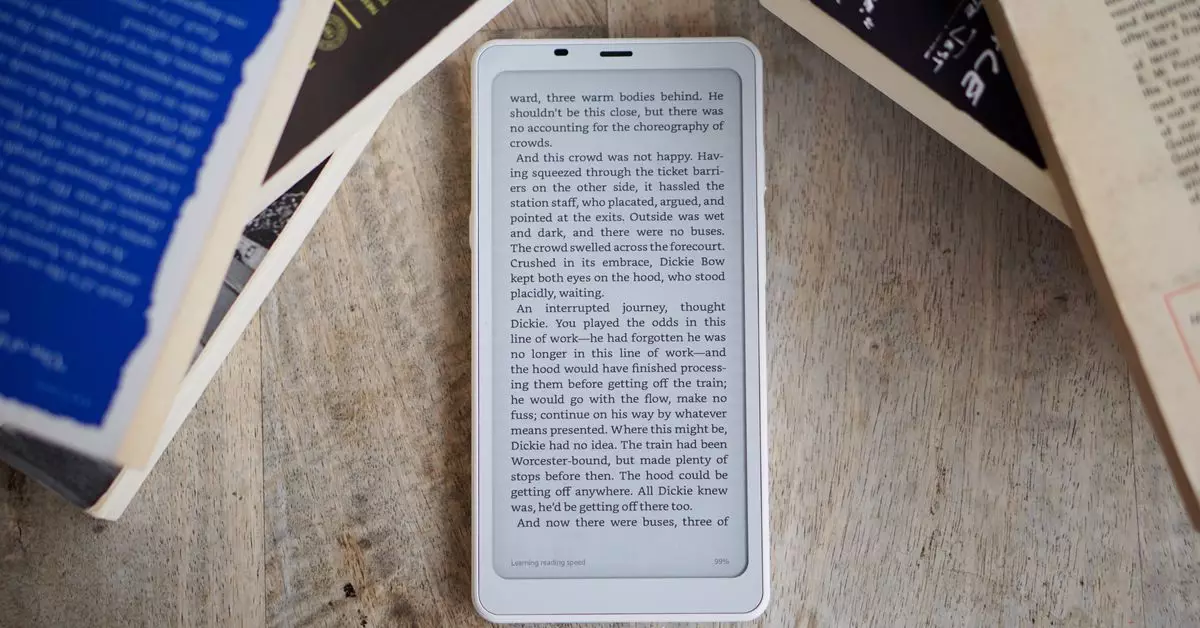In the realm of e-readers, innovation is often the heartbeat of product development. Yet, when it comes to the Onyx Boox Palma 2, it seems that the essence of the original Palma remains largely untouched. Released a mere year after its predecessor, the Palma 2 positions itself as an improvement, yet it doesn’t stray far from the foundations laid by the first-generation model. This raises a question: has Onyx failed to capitalize on the opportunity to redefine what a modern e-reader can be? In this review, we’ll dive deep into both the strengths and the glaring shortcomings of the Boox Palma 2.
Design and Build Quality: Striking a Balance
From a design perspective, the Palma 2 is a device that feels both familiar and lackluster. While the 6.3-inch E Ink Carta display remains a highlight, offering comfortable readability and good sunlight performance, the overall aesthetic and materials used leave much to be desired. Constructed from plastic, the Palma 2 exudes a certain level of fragility that makes one question the durability of the device, especially considering its $279.99 price tag.
In terms of usability, the power button with a built-in fingerprint reader is a commendable feature, albeit one that struggles with responsiveness. Light taps can often go unregistered, which leads to moments of frustration. While security is a concern, one must ponder the practicality of needing such measures on a device primarily aimed at reading. The overall user experience is akin to owning a gadget that is good but could have been so much better with a slight investment in materials and refinement.
Equipped with an updated octa-core CPU and moving to Android 13, the Palma 2 claims better performance—yet, in day-to-day usage, the upgrade feels negligible. Apps open with a noticeable lag, and while tasks like page turning are generally smooth, the device occasionally fails to register user inputs, particularly during quick interactions. An attempt to engage with multimedia content such as videos or games exemplifies the Palma 2’s limitations; these tasks can often lead to subpar experiences.
This performance comparison reveals a stark reality: the Palma 2 benchmarks slightly better than its predecessor, yet it still seems stuck in a somewhat dated performance range. Compared to modern smartphones, it appears significantly lagging, lacking the responsiveness one would expect from a device at this price point.
Battery Life and Usability: A Consistent Companion
One of the few areas where the Palma 2 genuinely shines is its battery life. Users can expect around four to five days of use on a single charge—consistent with its predecessor. This impressive endurance is paramount for a device designed for reading, as it mitigates concerns about frequent recharging, especially during trips or extended periods away from a power outlet.
However, it is worth mentioning that the Palma 2’s potential remains tied to its identity as an e-reader. While it can seamlessly manage music and podcasts, it rarely elevates beyond the realm of basic functionality. As a minimalist device, it remains attractive for its simplicity, yet this also restricts its broader appeal. Those seeking a true multitasking experience may find limitations within its framework.
What stands out significantly in the Palma 2’s iteration is the palpable sense of missed opportunities. Onyx had the chance to enrich the user experience by incorporating features such as a SIM slot for internet connectivity on the go or a refinement of the software to offer a smoother, more intuitive interface. The absence of these features feels like an oversight—one that could have transformed the Palma from a mere e-reader to a versatile multimedia device.
There’s also an ongoing conversation about the value of upgrades in the e-reader market. Much like other established devices, repeated iterations often lack substantive improvements, leaving users questioning whether there was any genuine need to advance. The Palma 2, while competent, feels like a transitional device rather than a leap forward in technology.
The Onyx Boox Palma 2 serves as a solid device for those who have yet to experience its predecessor. It offers a familiar format packed with essential functionalities for basic reading and multimedia consumption. However, for long-time users of the original Palma, the upgrades may not justify an immediate switch.
While it provides an appealing combination of an E Ink display, Android applications, and a compact form factor, the Palma 2 ultimately immortalizes the notion of an e-reader that once wished to ignite innovation yet remains in an evolutionary stasis. Until a worthy competitor emerges, the Palma 2 remains a viable option for readers, despite its shortcomings.

